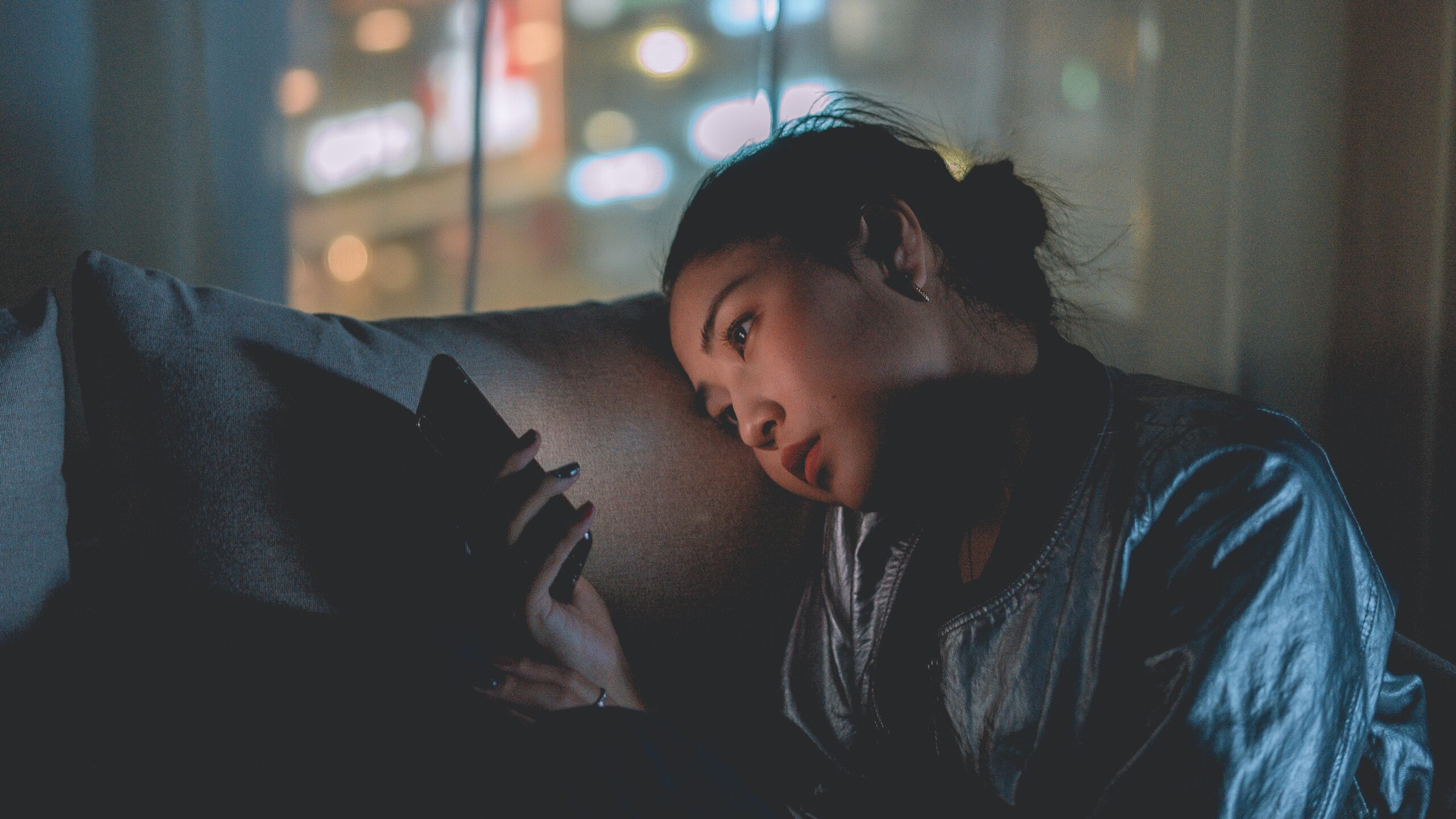April 21, 2023
Our Response to Violence in the Media: Is Apathy the New Normal?

From headlines of racial injustice popping up as dismissible notifications to make-up influencers sharing stories of violent murders while applying their favorite eyeshadow, why would we think twice about casually seeing violence in the media? Another day another black man murdered by police, another school shooting, another woman sharing her story of intimate partner violence. Consuming violence has become the new normal. Stories such as these regularly make headlines, but according to crime reports from 2022, violent crime has been decreasing. The Council of Criminal Justice reported the number of homicides was 4% lower, 3.5% fewer aggravated assaults, and a 5% decrease in domestic violence compared to data from 2021 1. Although fewer reports of violent crime is good, the issue lies within how we consume violent media as a whole.

Before we write off all violence in the media as bad, there is some good that comes from seeing it across major social networks. Released camera footage brings us face to face with the injustices of the world we live in that demand immediate action. Cases such as Ahmaud Aubrey, George Floyd and incidents sparked by the pandemic, leading to increased violence towards Asian Americans are only a few examples of video footage that exposes disturbing and violent behavior toward minorities in America. The movements for change and reform, Black Lives Matter and Stop Asian Hate arose from repeated instances of minority targeted crime. However, as wrong as violence in its many forms is, many of us accept that it is just a part of everyday life.

Anthony Downs in “Up and Down with Ecology – the issue attention cycle” maps out what he calls the dynamics of the issue attention cycle. According to Downs, we go through 5 stages: the pre-problem stage, alarmed discovery and euphoric enthusiasm, realizing the cost of significant progress, gradual decline of intense interest, and the post-problem stage. In the pre-problem stage, there is a social issue of concern that is not yet in the main media, however some may be aware and alarmed by the situation 2 . For example, many racial issues until recent years seemed to be stuck in a pre-problem stage. Due to lack of mainstream attention, violence towards communities of color was not as openly discussed as today. It takes an explosive event with mass media coverage to break everything wide open, leading into the alarmed discovery and euphoric enthusiasm phase. In this phase we see nonstop footage of the violence of the situation and hear countless stories from people in our communities with similar experiences. This sparks us to brainstorm how to solve the issue and pushes for change, but all too quickly. We then hit a roadblock when we realize the cost of the progress we wish to make. In reality, progress for large-scale change is slow and arduous and can only be made well if we work from the bottom to the top, fixing the foundation before repairing the roof. Because making progress for powerful social change takes a great deal of time and energy, we slip into a decline of social interest. Even though those of us with the best intentions are willing to put in the work, if we have lost major media coverage and support of the issue it begins to slowly fade to the back of our everyday lives. Finally we enter the post-problem stage. Yes, everyone knows of the issue but the world keeps spinning. We shake our heads and change the channel. What can we do? Despite our best efforts to improve our communities and work to make them safe, there is always something lurking, threatening to tear down what we have built. Another case will inevitably be cracked open and follow the same unfortunate rise and fall. We have begun to see this cycle spin faster and faster as social media grows, with continuous access to media and sharing videos and reflections of these events. There is simply too much going on to keep up with it all.
Although the use of cameras has enabled perpetrators to be identified and shared content has revealed unpleasant truths of the world we live in, there is a downside. We are exposed to real-life violence at a moment’s notice. Because of the shock factor of this type of content, it spreads like wildfire across TikTok, Twitter, Facebook, Instagram and other social apps. By the time the video is taken down, thousands of people have seen, shared, downloaded and re-uploaded the content no matter how graphic. Some may see and report, but others slip into Downs’ cycle. Two recent deaths, Khaseen Morris and Shanquella Robinson reveal the dark side of filming crimes through the bystander effect. The bystander effect occurs when the presence of others discourages an individual from intervening in an emergency situation. The greater the number of bystanders, the less likely it is for one of them to provide help to the person in distress 3. Additionally, this effect is tied to the diffusion of responsibility and social influence. Diffusion of responsibility is defined as a socio-psychological phenomenon whereby a person is less likely to take responsibility for action or inaction when other bystanders or witnesses are present 4. Social influence are the cues we pick up from those around us impacting our behavior and response to a situation 5. These three elements working in tandem create an environment where we deflect responsibility and eventually ignore what we see. Even if we may not be the ones directly involved in violent acts by committing or filming them, it is all too easy to assume the problem is someone else’s when in fact it is a much bigger social issue that demands attention.
With these three elements in mind, we can begin to understand how we react to victims involved in violent crimes. A study titled “Desensitization to Media Violence” reported a decrease in empathy and sympathy for portrayed victims in movies 6. This model can easily be applied to TV shows and even life cases gives us an understanding of general reactions towards victims in real and fictitious settings. Normally seeing violent acts and human suffering in fictitious media inevitably leads to blurring the line between enjoying violent content and watching it for general awareness of an issue. For example, the rise of true crime entertainment has uncovered an interesting part of the internet where creators often film themselves doing makeup or other casual tasks while discussing the grim details of real life murders. Oftentimes, within the group of content consumers, the focus shifts away from the horrors the victims faced and to the perpetrator. Serial killer obsession, glamorization, and romanticization is a more or less a common outcome from this content and similar. Although many of us can see the unethicality of consuming real life violent content as entertainment, we often watch TV shows portraying violently graphic scenes. Considering Downs’ model and decreasing sympathy towards victims, we have a clear picture of overall numbness to violence.

With Generation Z being on the front line of this issue, we are able to observe overall reactions to such acts. How violence is processed, real or fictional, is not done in a healthy manner, especially for younger members of this generation. Much of Generation Z has directly impacted how violence is discussed and digested. It is no surprise to see commenters on social media resorting to jokes in response to traumatic events as a coping mechanism or making memes rooted in dark humor. These actions only work to belittle the severity of the situation. Considering the life changing events and headlines we have lived through and witnessed in the past three years alone, many of us from this generation may feel a sense of compassion fatigue leading to an unfazed nature regarding violent media. Compassion fatigue is a condition characterized by emotional and physical exhaustion leading to a diminished ability to empathize or feel compassion for others, or simply the loss of caring 7. Typically, compassion fatigue is seen in those who have jobs to care for others such as those in medical or law enforcement occupations. Interestingly, this term has slipped into general media especially in regard to serious social issues.
We are more than capable of change but often become discouraged when social change is not in immediate reach. Many of us truly care, but we don’t have the capacity to care solely about social issues in our nation when people in our everyday lives depend on us being emotionally present. This highlights the importance of collaborating for change. Change is often not meant to be accomplished alone but within community through plans to meet success in slow, steady, and consistent steps. If we can master unity, we can conquer and revolutionize our communities, nation, and the world.
- Rosenfeld, R., Bobby Boxerman, B., & Lopez , E. Year-end 2021 update. March 18, 2022 Council on Criminal Justice. https://counciloncj.org/crime-trends-yearend-2021-update/ ↵
- Protess, D., & McCombs, M. E. (2016). 3. In Agenda setting: Readings on media, public opinion, and policymaking. essay, Routledge. https://sciencepolicy.colorado.edu/students/envs_5720/downs_1972.pdf ↵
- Sussex Publishers. (n.d.). Bystander effect. Psychology Today. https://www.psychologytoday.com/us/basics/bystander-effect ↵
- American Psychological Association. (n.d.) APA Dictionary of Psychology. American Psychological Association. https://dictionary.apa.org/diffusion-of-responsibility ↵
- American Psychological Association. (n.d.) APA Dictionary of Psychology. American Psychological Association. https://dictionary.apa.org/social-influence ↵
- Fanti, K. A., Vanman, E., Henrich, C. C., & Avraamides, M. N. (2009). Desensitization to media violence over a short period of time. Aggressive Behavior, 35(2), 179–187. https://doi.org/10.1002/ab.20295 ↵
- Kinnick, K. N., Krugman, D. M., & Cameron, G. T. (1996). Compassion fatigue: communication and burnout toward social problems. Journalism & Mass Communication Quarterly, 73, 687–707. https://journals.sagepub.com/doi/10.1177/107769909607300314 ↵
Tags from the story
Nomination-Academic-Explanatory

Janaya Felder
I am a student at St. Mary’s University majoring in forensic science criminology and minoring in biology. I will graduate in the class of 2023. I am adamant about research and problem solving which fuels me to be the change I wish to see in my professional and everyday life. My goal is to spark meaningful, open conversations through my writing promoting critical thinking and understanding.
Author Portfolio PageRecent Comments
Maggie Trujillo
Congratulations on being nominated! This is a very interesting article to read and I agree with it. I was surprised about the 5 stages that we go through and it makes sense about everything we see in social media. I also agree that we tend to have bystanders that would rather record and share versus getting help or providing assistance. The pictures were well picked to add value to the article!
28/04/2023
5:39 pm
Melyna Martinez
Hello, this article really shows the implications technology has had on society. As well it shows us that the more in touch we are with technology the less we are to our emotions. In a sense showing us that humans have become less sympathetic to situations. While in a way we also become over shares on situations and tend to report things like crimes.
28/04/2023
5:39 pm
D’vaughn Duran
Congratulations on being nominative! This was a great topic to write about. I didn’t know much about this topic, which is great. I never thought and overlooked a lot of social media and how it’s very over things. Sharing too much could cause accidents or not paying attention. This article was a great read for me as a reader! his article is great doing explains some cons that have been overlooked by many others and it was well structured with the information.
28/04/2023
5:39 pm
Gabriella Parra
Janaya! Congratulations on your nomination! You posed such a great question in this article. Having grown up in the age of the internet, I definitely wondered about this myself as I consumed media and talked to my peers. I’m glad you wrote about this topic. Hopefully it is a wake-up-call for those who read it. Great job on this article!
28/04/2023
5:39 pm
Maximillian Morise
One of the most overlooked societal problems is the issue of ‘information overload,’ and how it ends up making us psychologically apathetic. Your article looks at this problem in the context of violence in the media and how we have become increasingly indifferent due to the overload of violence, but also due to how we have become desensitized by it. Thank you for this article on this hard to talk about topic, and congratulations on your nomination!
30/04/2023
5:39 pm
Aaron Astudillo
Congratulations on the nomination Janaya. This is an article topic that I have not really seen formal discussion about. The discussion over the advancement of technology is always had, but there is not often discussion on the negative impact on society and its applications. The wide spread wave of information can be very useful to advancing human civilization but its interesting to see its consequences.
02/05/2023
5:39 pm
Anapatricia Macias Angulo
Hi Janaya! This is a topic I often think about—our desensitization to violence. You did a great job at giving different examples of this with more well-known social justice issues, as well as how people might cope with this type of exposure. “Jokes” and other inappropriate responses are often seen as normal. I did not know about Downs’s 5 different stages, and you explained them very well. Awesome job!
03/05/2023
5:39 pm
Christian Lopez
I agree with a lot of the themes in this article. It seems that every time I turn on the news or look at news platforms all there is is violence. With the mass exposure its not hard to see how people now a days are desensitized when something violent happens. Pointing attention to and interesting topic is important to possibly fixing the problem.
08/05/2023
5:39 pm
Victoria Dubois
Congratulations on the nomination! This was an excellent topic to cover, and I appreciate learning more about it. Prior to reading this article, I had overlooked the potential dangers associated with social media and oversharing. It’s crucial to be cautious and avoid accidents or inattention. As a reader, I found this article to be informative and well-structured. It effectively highlights some cons that are often overlooked by others. Great job!
09/05/2023
5:39 pm
Isabella Lopez
That was very informative. Congratulations on your nomination.I deleted TikTok for these exact reasons. I felt I was even becoming desensitized to violence. I don’t think I’m alone either but for others who can’t call themselves out I feel they use it to as an arguing chip.
28/04/2023
5:39 pm